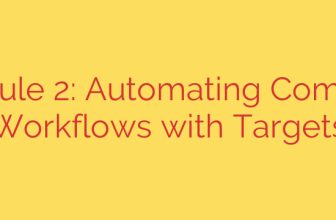
The Power of One: Unlocking Peak Efficiency with Unified Business Systems
In today’s fast-paced digital landscape, businesses are juggling more data, processes, and customer touchpoints than ever before. Departments often operate in their own bubbles, using separate software for sales, marketing, finance, and operations. This fragmentation leads to a common but critical problem: data silos. When information is trapped in disconnected systems, it creates inefficiency, hinders collaboration, and leads to poor decision-making.
The solution is a strategic shift toward unified systems. By integrating disparate functions into a single, cohesive platform, companies can break down these digital walls and create a streamlined, intelligent, and agile operational backbone. This isn’t just a minor tech upgrade; it’s a fundamental transformation in how a business operates.
What is a Unified System?
A unified system, often referred to as an integrated platform or an Enterprise Resource Planning (ERP) system, centralizes a company’s core processes into one shared environment. Imagine your sales team’s customer data, your finance department’s invoicing records, and your warehouse’s inventory levels all living in the same place and updating in real-time.
Instead of employees manually exporting data from one spreadsheet to another, a unified system ensures that when a sale is made, the information automatically flows to accounting, inventory is adjusted, and marketing can see the updated customer profile. This creates a single source of truth across the entire organization, eliminating guesswork and conflicting reports.
The Transformative Benefits of Integration
Adopting a unified approach delivers powerful, tangible benefits that directly impact your bottom line and competitive edge.
Drastically Improved Operational Efficiency: By automating routine tasks and streamlining workflows, unified systems free up your team to focus on high-value activities. Manual data entry is minimized, reducing the risk of human error and accelerating processes like order fulfillment, invoicing, and reporting. This translates to significant time and cost savings.
Data-Driven Decision-Making: With all your business data in one place, you gain unprecedented visibility into your operations. Leaders can access comprehensive, real-time dashboards that provide a holistic view of the company’s health. This allows for more accurate forecasting, smarter strategic planning, and the ability to quickly identify and address potential issues before they escalate.
An Enhanced Customer Experience: A unified system provides a 360-degree view of every customer. When your sales, marketing, and customer service teams all have access to the same complete history of interactions, they can provide a seamless and personalized experience. Customers no longer have to repeat themselves to different departments, leading to higher satisfaction and loyalty.
Greater Agility and Scalability: In a constantly changing market, the ability to adapt is crucial. Unified systems provide the flexibility to scale operations up or down, add new product lines, or enter new markets without being held back by rigid, disconnected software. Your business processes can evolve alongside your growth, ensuring you remain competitive.
Key Security and Implementation Considerations
While the benefits are clear, moving to a unified system requires careful planning. Centralizing your data means that protecting it is more important than ever.
Prioritize a Thorough Needs Analysis: Before choosing a platform, map out your existing workflows and identify the biggest pain points. A clear understanding of what you need to solve will ensure you select a system that is the right fit for your unique business challenges.
Make Data Security a Top Priority: A unified database is a valuable asset, making it a target. Ensure any platform you consider offers robust security features, including strong access controls, data encryption, and regular security audits. Implement clear internal policies on data handling to protect sensitive information.
Focus on User Adoption and Training: The most powerful system is useless if your team doesn’t use it correctly. Invest in comprehensive training and a change management strategy to ensure a smooth transition. Highlight the benefits for individual employees—such as reducing tedious tasks—to encourage buy-in.
In conclusion, the era of fragmented operations is coming to an end. Businesses that embrace unified systems are not just investing in new software; they are building a more efficient, intelligent, and resilient organization. By creating a single source of truth, they empower their teams, delight their customers, and position themselves for sustainable, long-term growth.
Source: https://collabnix.com/how-unified-systems-impact-modern-business-operations/








